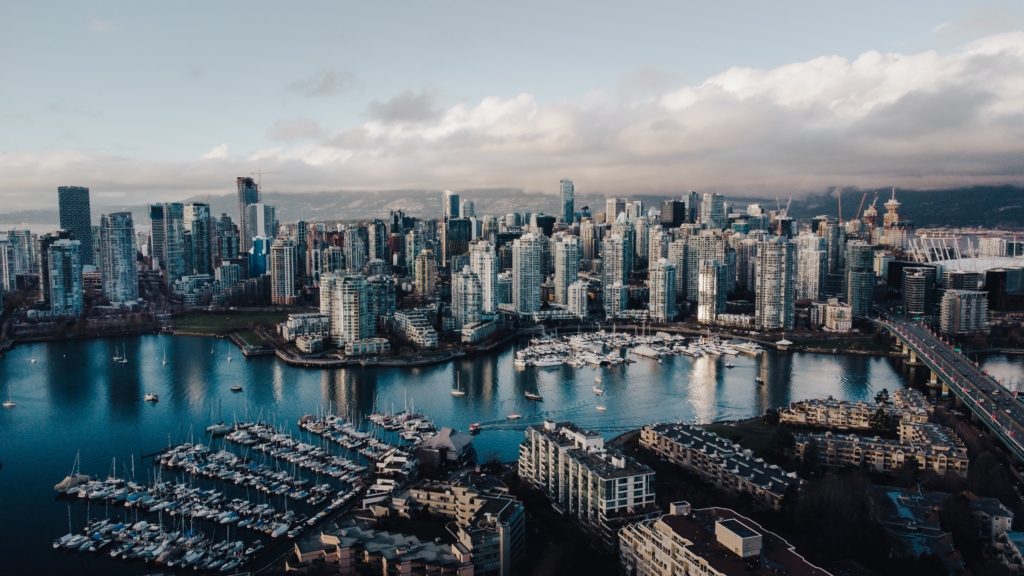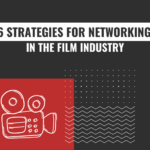Become a VFX Artist – Everything You Need to Know About a Career in VFX
Wondering how to become a VFX artist? We have everything you need to know about how to learn VFX compositing and make your mark in the industry!
By: Kennedy Randall
Visual effects (VFX) makes up the computer-generated images that you see on the screen. Whether it’s the monster that comes out from under the bed, the epic good vs. evil superhero battles, or the dinosaurs in Jurassic World, these characters and scenes come alive through VFX. And this is true in all forms of media in the entertainment industry today. Not only do blockbuster movies need visual effects, but so do advertisements, commercials, TV series, and more.
Pursuing a career in VFX means you are creative, handy with technology, and looking to tell visual stories. There are many different roads you could take in the VFX industry. In this guide on how to become a VFX artist, we’ll tell you what VFX artists do, where VFX artists work, and VFX artist salary. Keep reading to learn everything you need to know about a career in VFX.

Click here to learn more about InFocus Film School’s Compositing for Visual Effects Program
What Do VFX Artists Do?
VFX is a wide term to describe artists who use computer software to create computer generated images (CGI) that are unable to be captured by a camera. These digital assets are combined with live action shots and are integrated into most movies and television shows nowadays.
Within this broad umbrella of VFX, there are dozens of different roles that are employed at the studio, which we will go over in a moment. This is called the VFX pipeline, which is the process of different VFX roles who work together to make computer generated images and bring all these different elements to life on screen. If you become a VFX artist, there are many different roles you could undertake.
Below, we have outlined some of the roles that make the VFX pipeline run smoothly.
Types of VFX Work
1. Previsualist
Firstly a previsualist, you will create 3D animated versions of film storyboards. You need to know how to use 3D software to create the director’s vision.
2. Concept Artists
Concept artists take a brief, prepared by the client or a supervisor, and turn that into something that can come alive on screen. They guide the rest of the pipeline artists as they create the movie.
3.Modellers
To create the environment on screen, modellers create the objects, characters, and landscapes in 3D. You will have to know how to model just about anything, because your projects will vary! Modellers need immense flexibility and skill.
4.Texture Artists
After the models are created, texture artists apply shaders to the mesh, which is the primary structural build of a 3D model. This is a time consuming process, as this is what makes the models look realistic on screen. Use your patience and skill to work with the rest of your team to create a realistic end result.
5. Riggers
From there, riggers take a model and build the character’s skeleton so it can be animated and move on screen. You will bridge the work between the modeller and the animator, making sure that the animator can create visuals that move realistically from the model.
6. Matte Painters
Matte painters work from the concept artist’s work to create realistic environments for the animations to be integrated on seamlessly.
7. 3D Animator
At this stage, it is passed to the 3D animator who takes a character and object and makes it come live! Because this is a hefty job, some studios spread out the types of animation across different roles like junior animators, assistant animators, stop motion animators, and many more
8. Technical Directors
Technical directors (TD), then use special effects to create effects such as explosions, water, debris, and more. There are also lighting TDs who replicate realistic lighting in the shots. There are also rendering TDs, who ensure that everything is running smoothly on the computer end of the pipeline.

9. Compositor
The compositor puts all of these elements together, using a keen eye for detail to integrate elements of a shot. Unsurprisingly, this takes a lot of patience and time to figure out solutions to get all the various elements of the pipeline to work together.
10. Roto Artist
Roto artists work alongside the compositor to create the mattes they need. These artists are huge team players, making everyone’s lives easier. Many compositors begin as roto artists, meaning this is a role you can move up from!
11. Pipeline TD
Finally, there is a pipeline TD who is a team player, overseeing the entire pipeline and making it run efficiently and smoothly. You need to know how to troubleshoot the entire pipeline, using knowledge of each position and how they work together in order to solve problems that may arise.
Where do VFX Artists Work?
VFX artists work wherever entertainment industries are found. VFX artists either work with a studio or freelance, working on things from games, film and television. This is especially common in major city centres that have companies looking for VFX artists. The first places people think of are Los Angeles and London but prestigious studios exist everywhere. There is WetaFX in New Zealand or Animal Logic in Sydney, Australia.
You also might be surprised to learn Canada also has many VFX studios, mainly located in Vancouver, Montreal, and Toronto. The VFX industry in Vancouver (otherwise called Hollywood North) is booming, with many companies growing and relocating to the area. There are also many opportunities to study in these VFX hubs, with courses like this 6-month program that can set you up for success in the VFX industry and become a VFX artist.
Sony Pictures Imageworks is one of Vancouver’s largest VFX and animation studios. With opportunities to work on movies like Guardians of the Galaxy and Spiderman, keep your eyes posted for job listings once you learn VFX and compositing.
Industry Light and Magic (ILM) is a visual effects studio located in Vancouver that has worked on Marvel Universe films like Infinity War, Black Panther, Thor: Ragnraok and more. Further, DNEG (Double Negative) is a star in the VFX Vancouver world. They have won a slew of awards including 5 Academy Awards, 5 Bafta Awards, and 11 Visual Effects Society Awards.
A city like Vancouver is a great place to become a VFX artist, full of opportunities and impressive companies.
As well, Montreal has many companies like Digital Domain, Mill Film and Mr. X Inc, which has offices in both Montreal and Toronto. Canada’s VFX industry is booming, and there is no better place to get your career started!
What is a VFX Artist’s Salary?
When considering how to become a VFX artist, you may be wondering how much do VFX artists earn? According to Glassdoor, Vancouver’s VFX industry is paying well! A VFX artist’s salary in Vancouver is around $57,179 and is predicted to rise. Across Canada, the average VFX artist salary is $55,741, meaning wherever you go in Canada, VFX is booming. As the demand for VFX grows, the average Canadian VFX salary increases with it, with expected growth in the next couple years.
Why are VFX Artists in Demand?
Nowadays, VFX artists are in high demand and continue to be as our world becomes increasingly digitized. Most of the movies and television shows nowadays use VFX and this will increasingly continue to be the case. As well, VFX artists are needed now outside of the entertainment industry, in advertisements, various commercial companies, and more.
With this in mind, VFX is a highly employable industry and it will continue to be for years to come. Now that it is the standard for visual effects to be used in many films, it will never go away. Rather, it will continue becoming more advanced and creative. If you become a VFX artist, the opportunities where you can work will continue to grow.
Overall, when wondering how to become a VFX artist, there are many different roles and places where you can work. Therefore, all that’s left to do is to master the skills and follow your dreams. Once you learn VFX and compositing, nothing can stop you. Work hard, be persistent, and soon we’ll all see your work on the big screen.
Related Articles
InFocus Compositing for Visual Effects Program
Six Tips for Working in the VFX Industry in 2021











